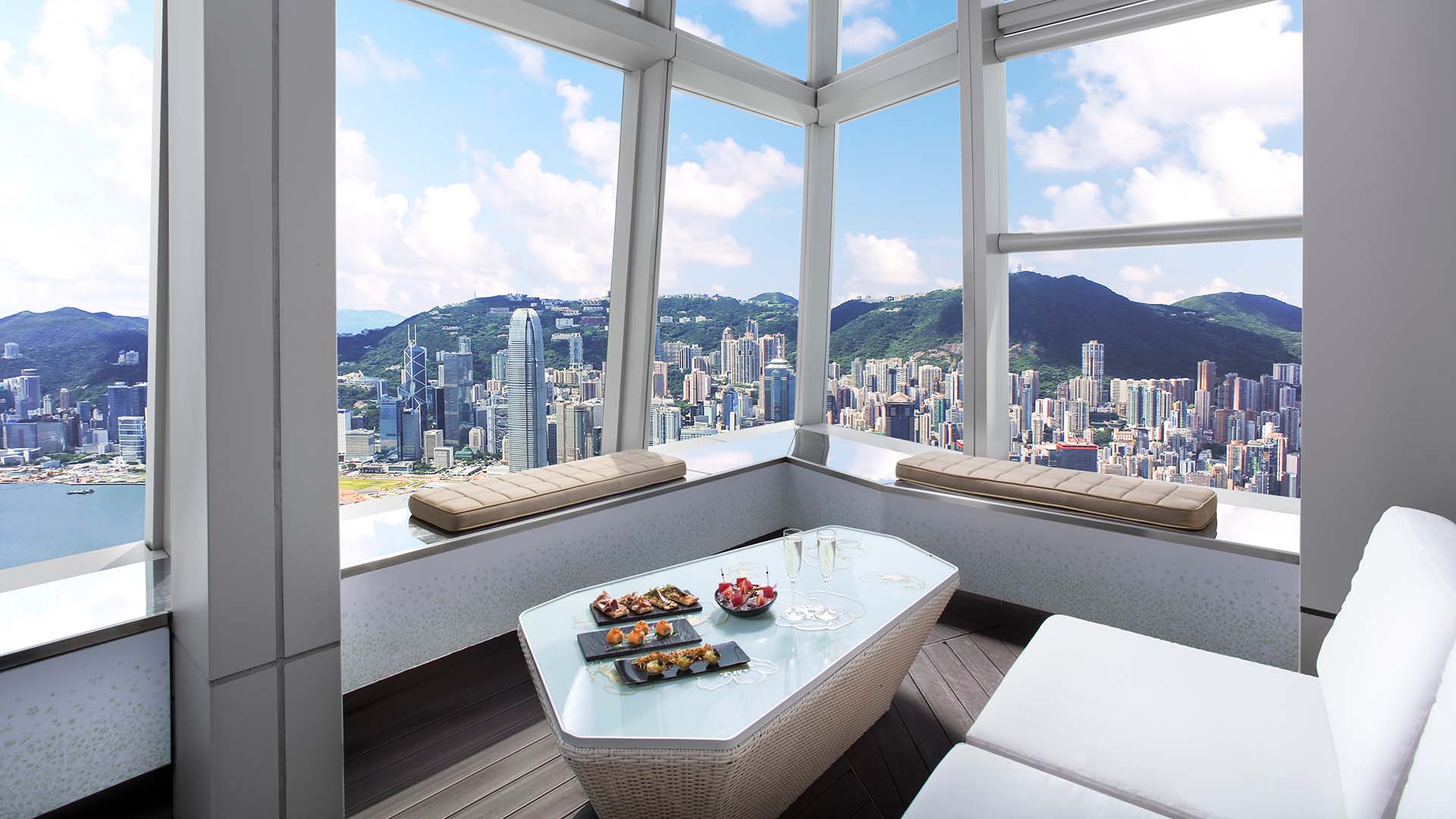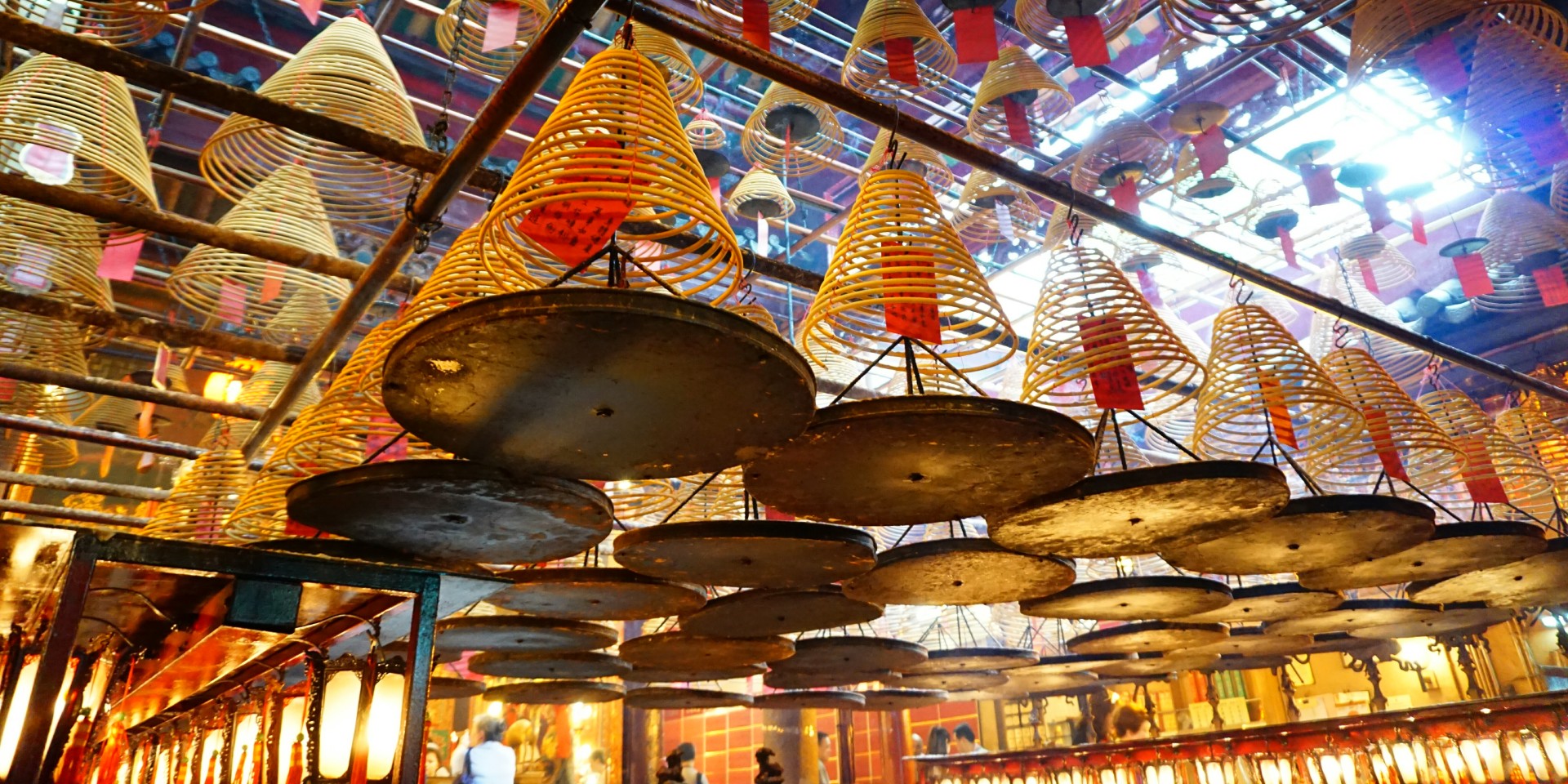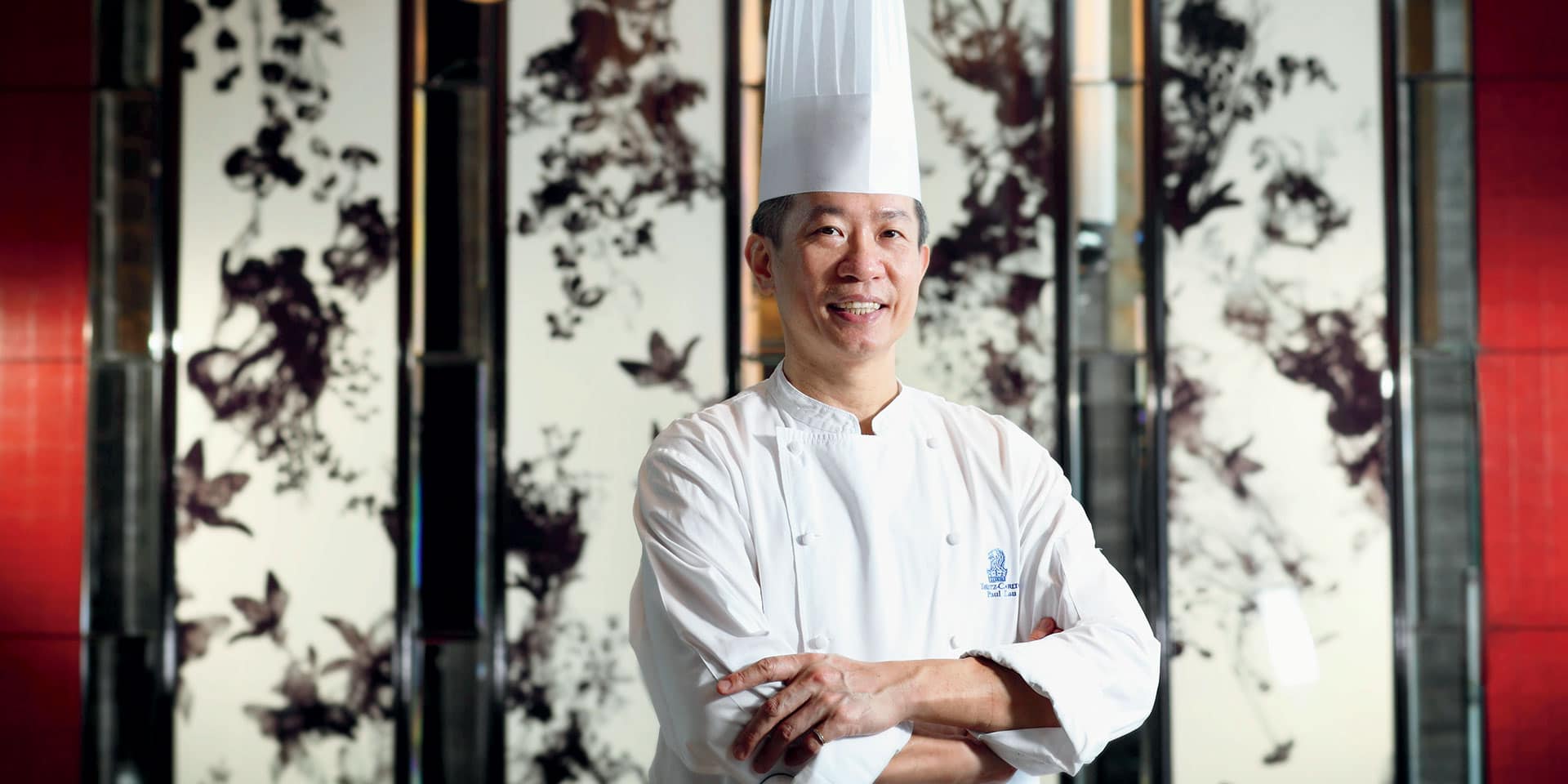
Chef Paul Lau of the The Ritz-Carlton, Hong Kong’s Tin Lung Heen. (Photo: Marriott International)
Hong KongHong Kong Chef Paul Lau Sets Cantonese Cuisine Apart at Tin Lung Heen
By Oneika RaymondWhile Cantonese restaurants are a dime a dozen in Hong Kong, there’s no better place to indulge in the fare than at Tin Lung Heen, the popular establishment helmed by Chef Paul Lau, located on the 102nd floor of The Ritz-Carlton, Hong Kong.
With nearly 40 years of experience working in kitchens across China, Dubai and the United Kingdom, Lau has built a reputation as one of the world’s top chefs specializing in Cantonese cuisine. Since bringing his talents to Tin Lung Heen as chef de cuisine in 2011, the restaurant has been recognized with a two-star Michelin rating for three consecutive years: 2013, 2014 and 2015.
Surprisingly, the highly regarded Lau didn’t initially aspire to become a chef. After moving to Hong Kong at age 14, he started working in a kitchen because his employers not only provided him with a salary, but also with free meals and living quarters.
But what began as a necessity soon transformed into a passion for cooking, followed ultimately by an illustrious career spanning many years and locations.
Marriott Bonvoy Traveler recently sat down with Chef Lau to learn more about his work, Cantonese food and what sets Tin Lung Heen apart from other restaurants of its ilk.
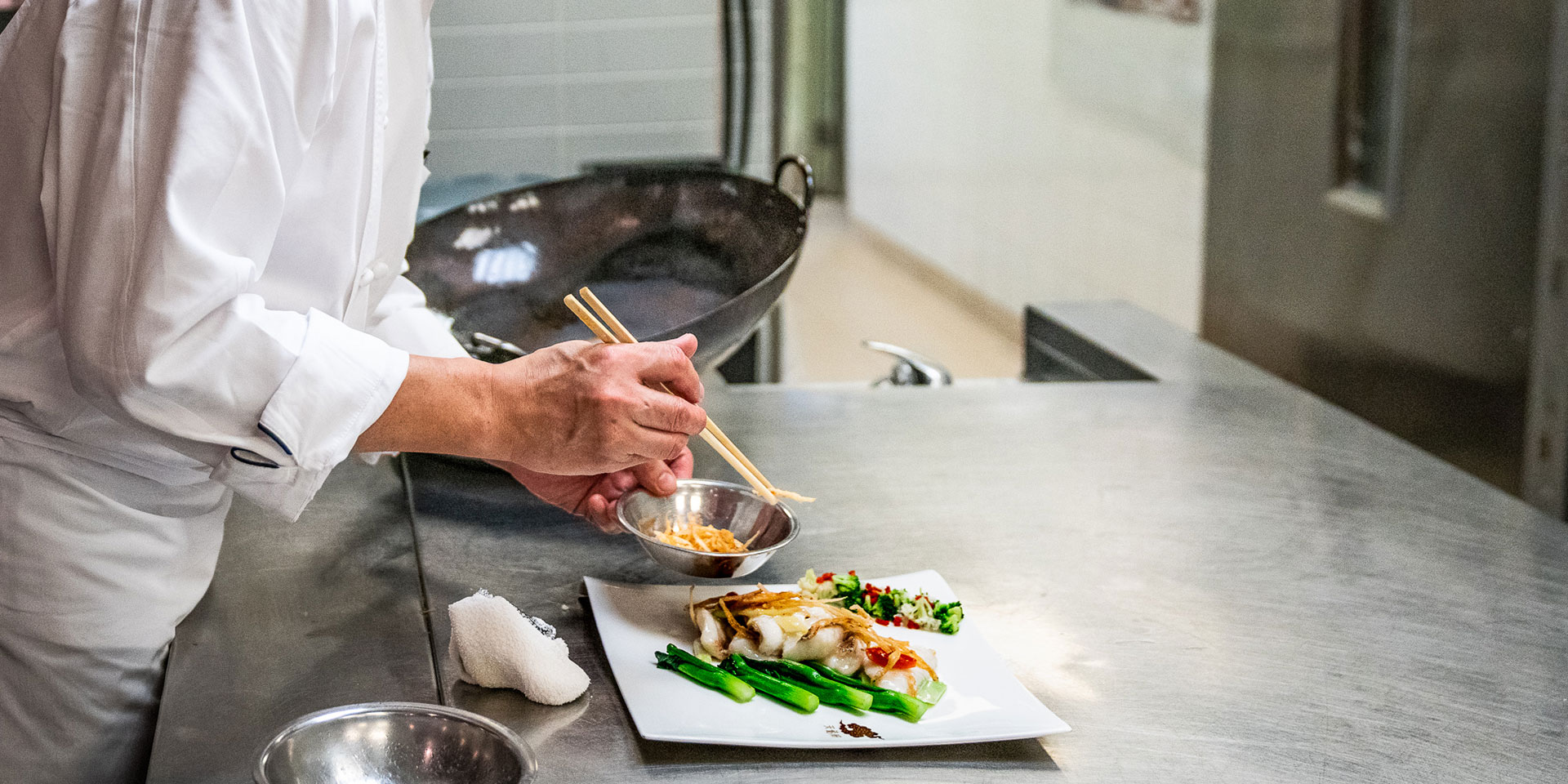
Hong Kong is often referred to as cosmopolitan. In a place with so many different culinary influences, why is it important for you to showcase Cantonese cuisine?
To be honest, Cantonese food is what I know. I came to Hong Kong in 1977 with my family and promptly began working in a kitchen because I needed money. I have been cooking Cantonese food ever since.
What eventually inspired you to pursue cooking as a career? Was there any particular event or person?
Early on, I was very inspired by a chef I began working under in Hong Kong. I really liked his work, and that was a turning point for me. I then put all my energy into my training — primarily by observing what he did in the kitchen.
But to be clear, nobody really taught me how to cook; I am self-taught. When I was at work, I would closely watch what that chef, as well as some of the other cooks, were doing.
From there I would select the best techniques I saw on display and incorporate them into my own practice. Then, when everyone would leave the kitchen to go home for the evening, I would stay behind and perfect the skills and techniques I had learned from observing, all while adding my own flair.
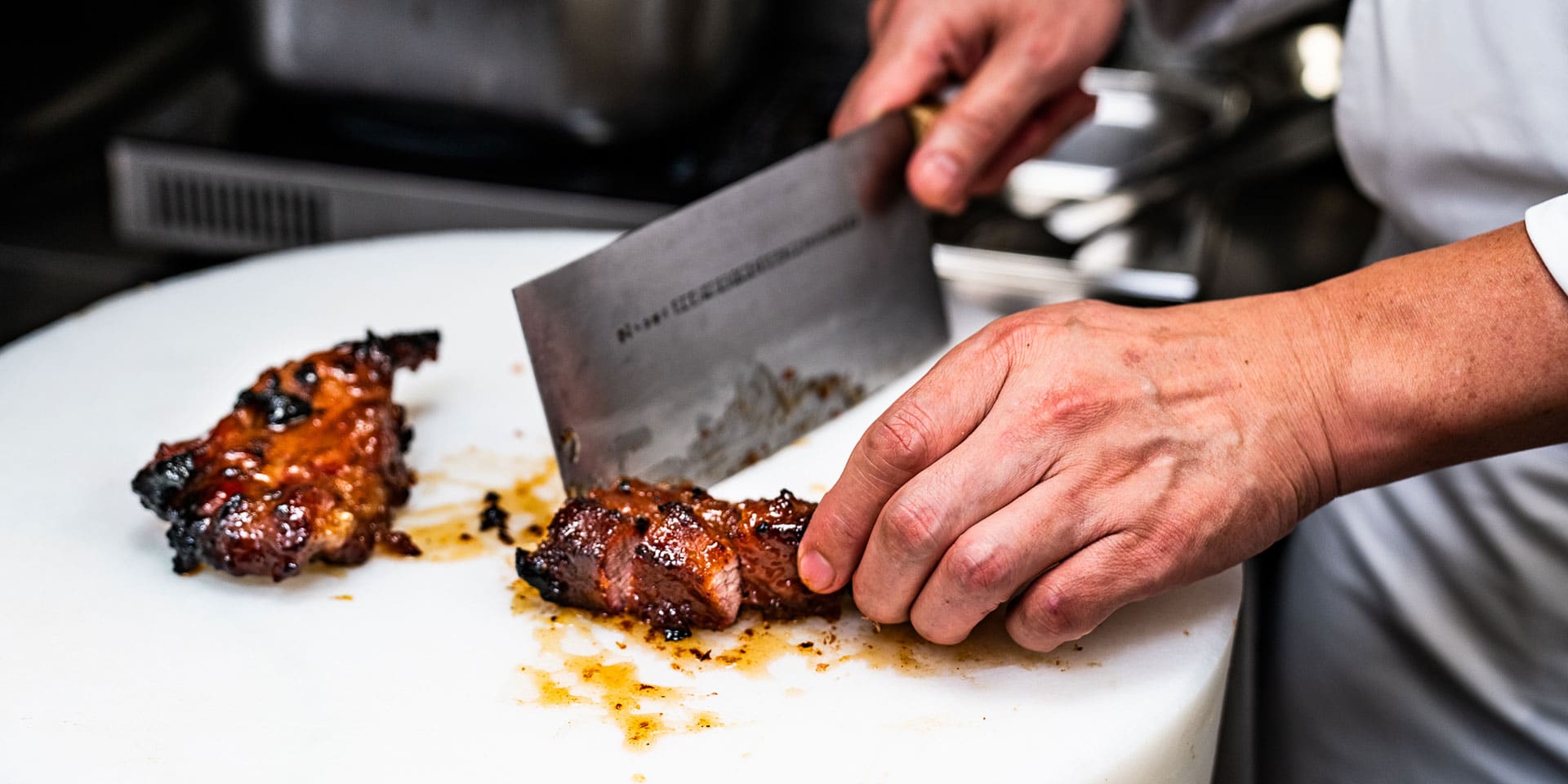
What is Cantonese cuisine exactly? What are two dishes that best embody it in your opinion?
Chinese cuisine as a whole is very diverse: for example, there’s Shanghainese cuisine and Sichuan cuisine. They are all very different from each other, especially in terms of taste.
I specialize in Cantonese cuisine, which is perhaps more “balanced” tastewise: While the sauce used in Shanghainese cuisine is more strong and sweet, Cantonese cuisine is generally not too sweet, not too salty and not too spicy.
This is a very important principle in Cantonese cooking. Good quality ingredients are key, and the guest should always be able to feel the wok hei [this literally translates as “the breath of the wok,” referring to the smoky flavor food has when stir fried in a wok].
With that said, two typical Cantonese dishes are barbecue pork [char siu] and dim sum.
What is your favorite Cantonese dish?
I can’t just choose one! Some favorites of mine are barbecue pork, fire lobster, crab and turnip dumplings.
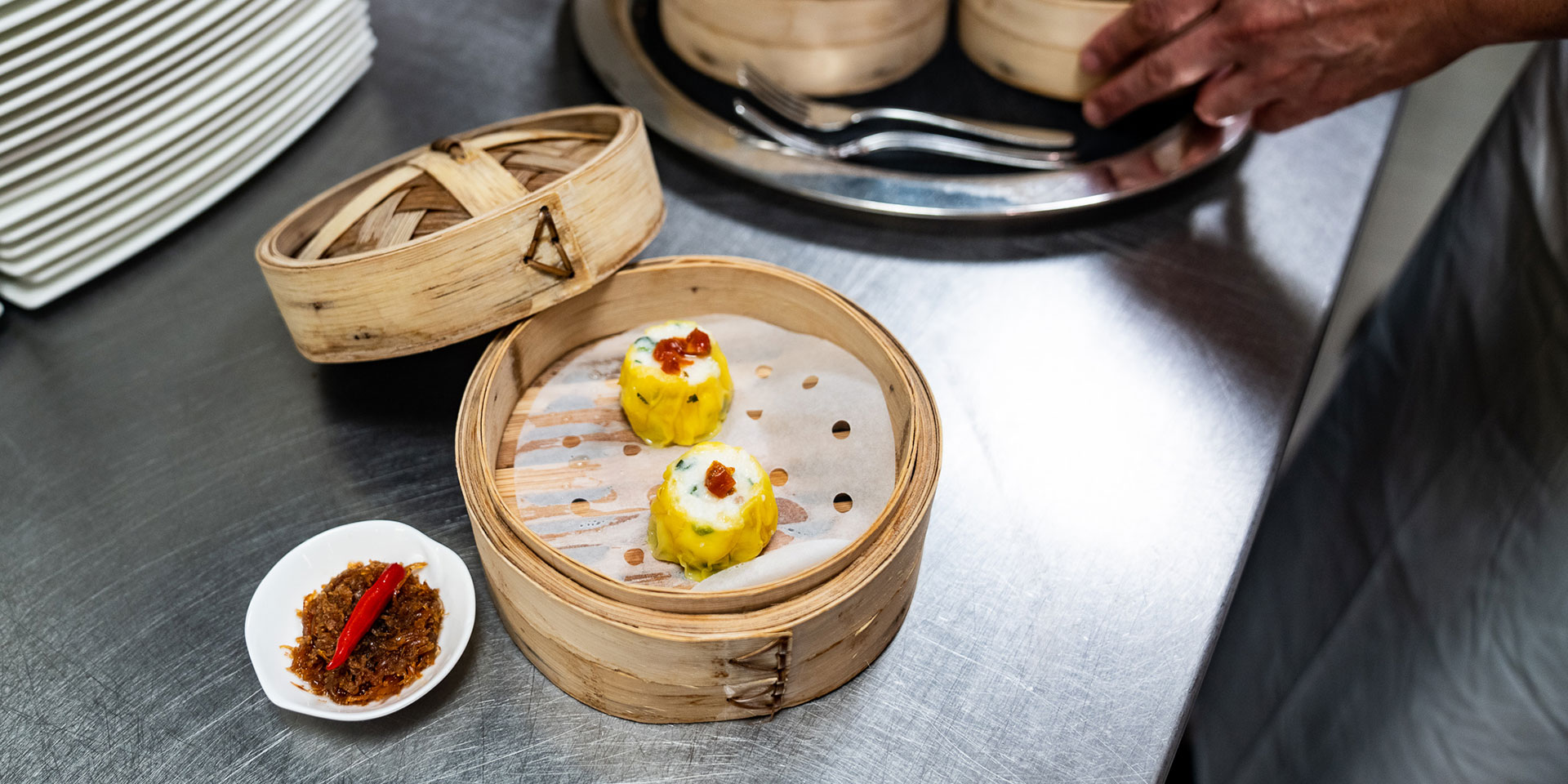
Tin Lung Heen has been recognized with a two-star Michelin rating for three consecutive years. Why do you think this is? What sets your restaurant apart from the many others on the Hong Kong dining scene?
I take the service, quality, cooking and cleaning very seriously. I am a meticulous person and oversee everything — from cooking to cutting to steaming to barbecuing to administrative tasks. Furthermore, consistency is important among my chefs, even for the very small details.
For example, sometimes I watch the staff chopping vegetables. If I see a chef doing it differently than what I’ve taught him to do, I’ll let him know right away because to me, following these steps ensures everything is the same and that we’re all achieving the same standard.
The skill of the chef, as well as the attention to detail, truly make a difference in the overall quality of the dish. This is why I strive for excellence in everything I do, and did so even as a young chef. If something is not perfect, I will try to tweak it to make it better.
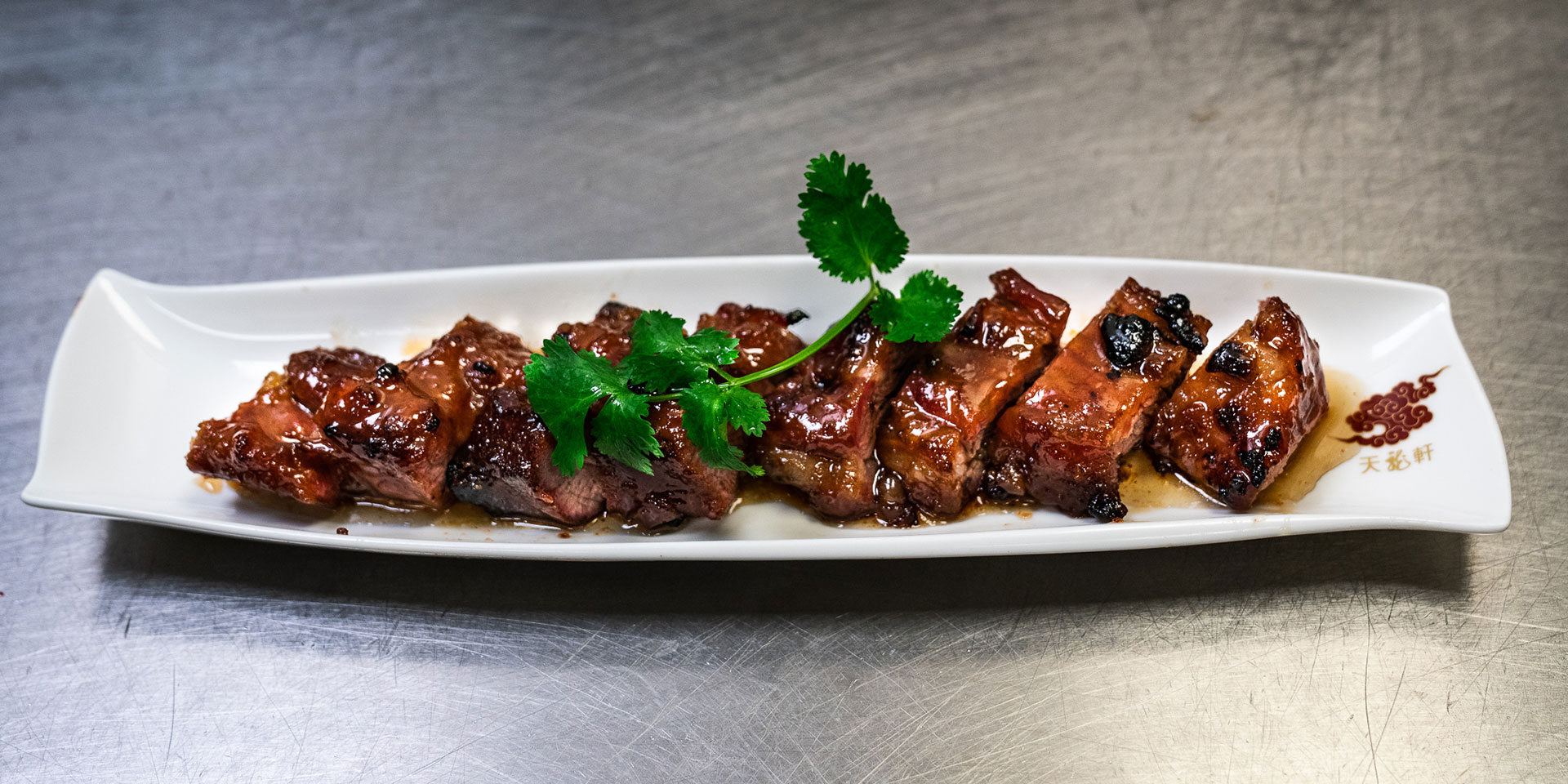
Dim sum is an integral and traditional part of Hong Kong’s dining culture. How does Tin Lung Heen put its own twist on this local staple?
We have a large variety of dim sum items on the menu, and while many of them are traditional, many of them are innovative or different. Traditional dim sum usually consists of beef and pork and shrimp.
But Tin Lung Heen’s menu has dumplings with fillings you wouldn’t expect, like scallop or garoupa fish and dried tomato.
Which dish would you add to the menu that isn’t currently on it? Why?
To tell the truth, I’ve added so many new dishes to the menu over the years that at the moment I can’t think of anything else! With that said, every six months the restaurant changes its menu, so I should be coming up with new additions soon.






